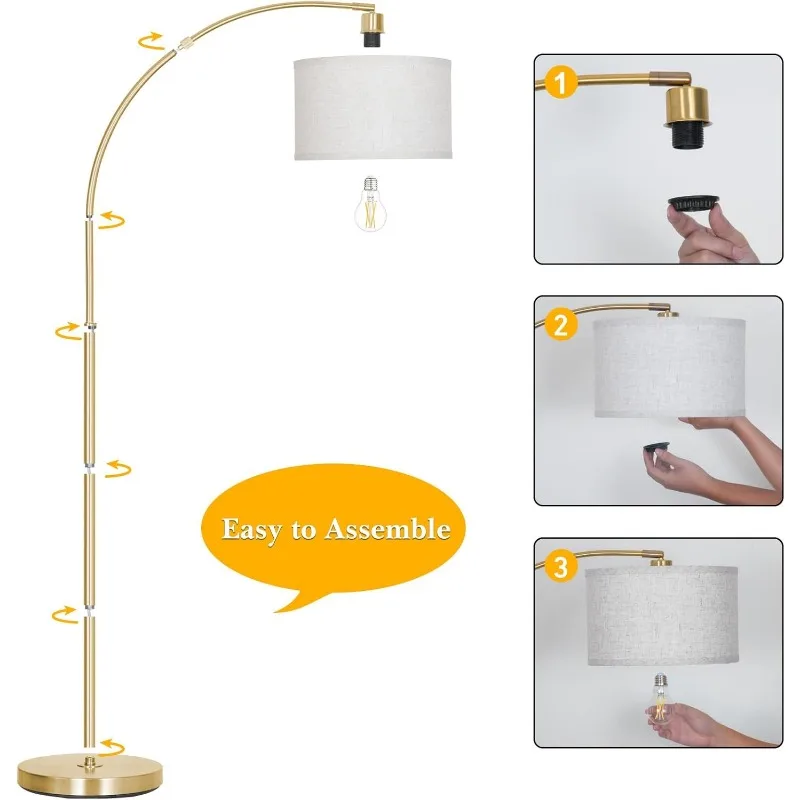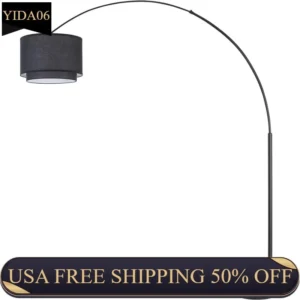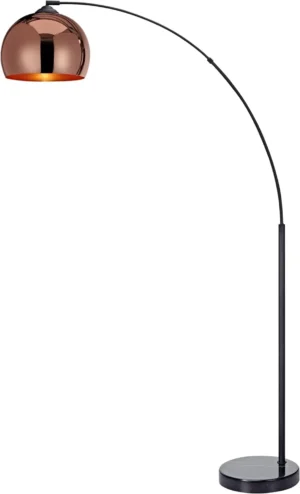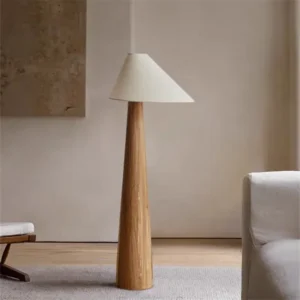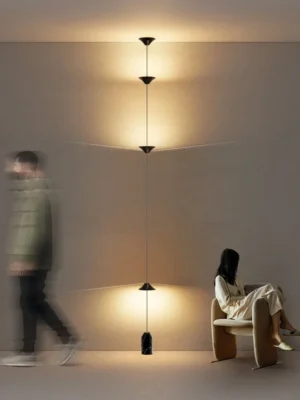Introduction to Arc Floor Lamp Stability Challenges
Arc floor lamps have become popular interior design elements thanks to their distinctive curved design and dramatic lighting effects. These statement pieces feature a graceful arching arm that extends from the base to suspend a light fixture above your furniture, creating both ambient lighting and visual interest in any room.
However, the same design that makes arc floor lamps so appealing also creates inherent stability challenges. The cantilevered design—where the light fixture hangs at the end of a curved arm—creates a natural imbalance. This top-heavy nature leads to common frustrations for lamp owners:
- Wobbling when touched or when people walk by
- Leaning or tilting over time
- Risk of tipping, causing potential damage or injury
- Unstable positioning that requires constant adjustment
Properly stabilizing your arc floor lamp isn’t just about preventing annoyances—it’s about ensuring safety, protecting your investment, and extending the life of your lighting fixture. The ultimate guide to arc floor lamp base stability can provide comprehensive context, but this article will walk you through practical solutions for common stability issues.
Many design-focused lamps, especially those with marble base arc floor lamp designs, attempt to balance aesthetics and function. While the heavy marble helps counterbalance the arched arm, even these elegant solutions can benefit from additional stabilization techniques.
Identifying Common Causes of Arc Lamp Instability
Before attempting to fix your wobbly arc floor lamp, it’s important to understand what’s causing the instability. Different problems require different solutions, and proper diagnosis will save you time and effort.
Insufficient Base Weight
– The weight of the base isn’t proportional to the length of the arc
– Lamp leans in the direction of the arc, especially when extended fully
– Base may lift slightly on one side when the lamp is touched
Loose Connections
– Wobbling occurs at specific points along the lamp’s structure
– Audible rattling when the lamp is gently moved
– Visible gaps between components that should fit tightly together
Uneven Flooring
– Lamp sits at a slight angle even when components are properly tightened
– Stability changes when the lamp is moved to different locations
– Base doesn’t make full contact with the floor on all sides
Soft Surface Placement
– Lamp sinks or tilts when placed on carpet or area rugs
– Stability improves when moved to hard flooring
– Base makes impression in carpet over time
Structural Damage
– Bent components that affect weight distribution
– Cracked or damaged base affecting its stability
– Deformed connections from improper assembly or moving
Understanding the specific cause of your lamp’s instability will guide you toward the most effective stabilization methods. Most arc floor lamps require some additional stabilization, and knowing how to prevent arc lamps from tipping will help you enjoy your lighting fixture without worry.
Essential Tools and Materials for Arc Lamp Stabilization
Before starting any stabilization project, gathering the right tools and materials will make the process much easier. Here’s what you might need depending on your chosen solution:
| Category | Items | Purpose |
|---|---|---|
| Basic Tools | Phillips and flathead screwdrivers Adjustable wrench Bubble level Measuring tape | For tightening connections For adjusting nuts and bolts To check levelness For proper measurements |
| Weighting Materials | Play sand or aquarium gravel Weighted discs Steel plates Adhesive weights | For filling hollow bases For adding to existing base For creating stable platforms For discrete weight addition |
| Leveling Supplies | Furniture shims Felt pads Non-slip rubber mats Cork discs | For uneven floors For protection and stability For carpet placement For minor adjustments |
| Securing Options | Furniture anchors Double-sided tape Velcro strips Wall brackets | For permanent solutions For temporary attachment For removable security For preventing tipping |
| Safety Equipment | Work gloves Safety glasses | For handling rough materials If using tools for modifications |
The specific tools and materials you’ll need will depend on your lamp model and the stabilization method you choose. Large oversized arc floor lamps typically require more substantial stabilization solutions due to their extended reach and greater weight imbalance.
Having everything ready before you begin will make the process more efficient and help you avoid multiple trips to the hardware store. Most of these items can be found at home improvement stores, craft shops, or may already be in your home.
Adding Weight to the Lamp Base
One of the most effective ways to stabilize an arc floor lamp is by adding weight to the base. This counters the natural imbalance created by the arched design. Here’s how to do it properly:
Understanding the Physics
Arc lamps operate on a simple principle: the weight of the base must counterbalance the weight of the extended arm and light fixture. When the base is too light relative to the arm length, instability occurs. Adding weight to the base creates a more favorable balance point.
Methods for Hollow Bases
If your lamp has a hollow base, you have several filling options:
Sand or Fine Gravel
– Remove any base cover or access panel
– Use a funnel to pour clean, dry sand or aquarium gravel into the base
– Fill to approximately 80-90% capacity to allow for settling
– Seal the opening with the original plug or silicone sealant
– Benefits: inexpensive, easy to find, provides excellent weightDecorative Stones or Marbles
– Follow the same filling process as with sand
– Choose stones that complement your lamp’s design if the base is transparent
– Benefits: dual purpose of adding weight and visual appealCommercial Lamp Weights
– Purchase purpose-made lamp weights designed to fit inside or attach to bases
– Follow manufacturer instructions for installation
– Benefits: precisely designed for the purpose, often include non-slip features
Solutions for Solid Bases
If your lamp has a solid base that can’t be filled:
External Weighted Platforms
– Create or purchase a platform slightly larger than your lamp base
– Add weight to the platform (concrete paver, metal plate, etc.)
– Place the lamp on top of the platform
– Consider adding felt to the bottom to protect flooringBase Extensions
– Design a complementary base extension that surrounds the original base
– Make it from heavy material like wood, stone, or metal
– Ensure it’s large enough to provide stability but not so large it becomes a tripping hazard
The amount of weight needed depends on your specific lamp’s design. Generally, the longer the arc, the more counterweight needed. Weighted bases for arc lamps can significantly improve stability while maintaining the lamp’s aesthetic appeal.
For a typical arc lamp, adding 5-15 pounds of additional weight can make a noticeable difference in stability. Always distribute the weight evenly around the base to maintain proper balance.
Tightening and Securing Loose Components
Loose connections between lamp components are often overlooked causes of instability. A systematic approach to checking and tightening these connections can significantly improve your lamp’s stability.
Systematic Connection Check
Base-to-Pole Connection
– This is often the most critical connection point
– Turn off and unplug the lamp before inspection
– Check for any wobbling where the pole meets the base
– Tighten any visible screws, bolts, or nuts using appropriate toolsPole Sections
– Many arc lamps have sectional poles that screw or slot together
– Verify each section is fully tightened or seated
– Look for gaps between sections that indicate loose connectionsArc-to-Pole Connection
– Check where the arched section connects to the vertical pole
– This connection often bears significant stress and can loosen over time
– Tighten any adjustment knobs or screws that control the arc positionShade Attachments
– Ensure the light fixture or shade is properly secured to the end of the arc
– An imbalanced shade can affect the entire lamp’s stability
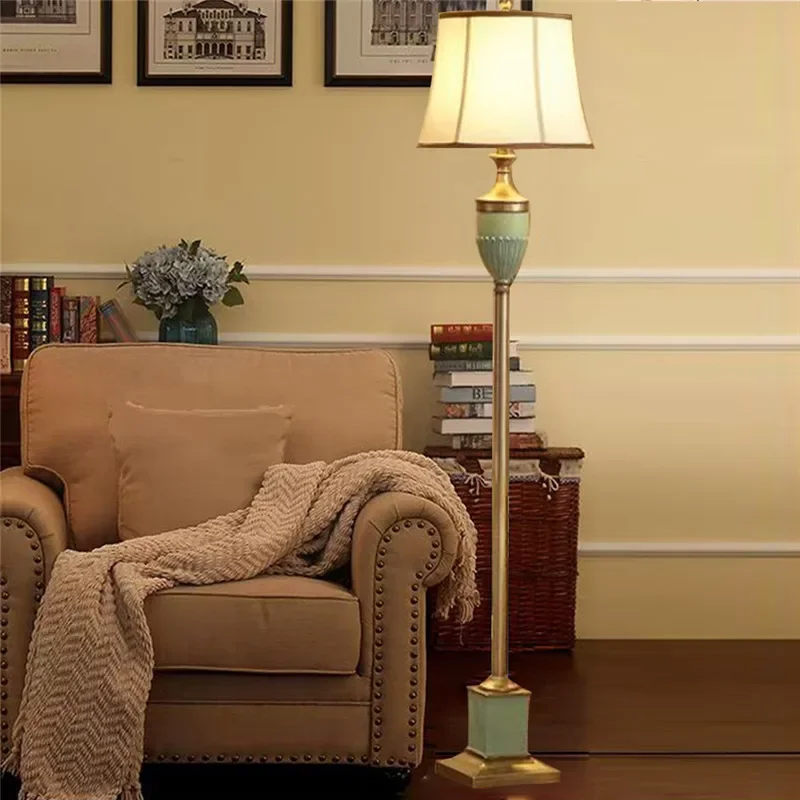
Fixing Damaged Connections
If you encounter stripped threads or worn connections:
- Use thread-locking compound (like blue Loctite) for connections that keep coming loose
- Apply PTFE (plumber’s) tape to threads to create a tighter fit
- Replace damaged screws or bolts with slightly larger ones if original threads are stripped
- For severely damaged connections, consider using epoxy or metal repair compounds as a last resort
Be careful not to overtighten connections, as this can damage the lamp’s structure or strip threads. The goal is to create a secure connection without applying excessive force. Understanding how to secure tall floor lamps can provide additional guidance for particularly problematic connections.
Regular maintenance of these connection points can prevent stability issues from developing over time. Even a quarter turn tightening periodically can keep your arc lamp stable and secure.
Addressing Flooring and Surface Issues
The surface your arc floor lamp stands on plays a crucial role in its stability. Different flooring types present unique challenges that require specific solutions.
Hard, Uneven Floors
Even floors that appear level can have slight variations that affect lamp stability:
- Use a bubble level placed on the lamp base to check for unevenness
- Insert thin furniture shims under specific parts of the base to create a level foundation
- Apply felt pads of varying thicknesses to compensate for minor variations
- Consider adjustable furniture levelers that can be screwed into the base for permanent leveling
Carpet and Soft Surfaces
Carpets present particular challenges as they compress unevenly under the lamp’s weight:
- Place a rigid platform (plywood, acrylic, or metal plate) under the lamp base to distribute weight more evenly
- Consider purpose-made lamp base extenders designed for carpet use
- Use non-slip carpet pads cut to the shape of your lamp base to prevent shifting
- For deep pile carpets, slightly “nest” the lamp base by gently pressing it into position to create a stable pocket
Transitional Areas
Particular attention should be paid to lamps placed where different flooring materials meet:
- Avoid placing the lamp directly on flooring transitions when possible
- If necessary, bridge the transition with a small platform that extends to both flooring types
- Ensure the majority of the base sits on one flooring type rather than straddling two
Proper positioning relative to room traffic patterns also contributes to stability. Place your lamp away from high-traffic pathways to minimize the risk of accidental bumps. Learning how to keep floor lamps from leaning can provide additional insights into addressing flooring-related stability issues.
Remember that seasonal changes in humidity can affect both flooring and lamp components, so occasional readjustment may be necessary even after implementing these solutions.
Creating Custom Stabilizing Solutions
When standard stabilization methods aren’t sufficient or don’t match your decor, custom solutions offer both functionality and aesthetic benefits. Creating your own stabilizing elements allows you to perfectly match your lamp to your interior design.
DIY Base Extenders
Custom base extenders can significantly improve stability while enhancing your lamp’s appearance:
Wood Platforms: Create a circular or square platform from plywood or solid wood that extends 2-4 inches beyond the original base. Sand edges smooth, then stain or paint to complement your lamp and furniture. Add felt padding underneath to protect flooring.
Stone Options: Use decorative stone tiles or a pre-cut marble/granite piece as a base. The natural weight of stone provides excellent stability while adding sophistication.
Metal Designs: For modern lamps, consider having a steel or brass plate cut to size at a metal shop. These can be finished to match other metal elements in your lamp.
Decorative Weighted Solutions
Transform stability necessities into design features:
- Fill a decorative bowl or planter with sand or stones, then place the lamp base inside
- Create a “lamp surround” from river rocks, glass beads, or other decorative elements
- Design a custom wooden box that conceals the original base while providing extra stability
When designing custom solutions, keep these guidelines in mind:
- Extend the base proportionally—typically 25-50% wider than the original base
- Ensure the height of any platform doesn’t create an awkward proportion
- Maintain access to any switches or controls on the original base
- Consider the lamp’s style when choosing materials and finishes
Wood arc floor lamps often benefit from custom wooden platforms that complement their natural aesthetic while providing additional stability. The key is creating a solution that appears intentional rather than retrofitted.
Custom solutions are particularly valuable for vintage or unique lamps where commercial options may not be available. With careful design and execution, your stabilizing solution can become a design feature rather than just a functional fix.
Securing Arc Lamps to Walls or Nearby Furniture
For maximum stability, especially in homes with children, pets, or in earthquake-prone areas, securing your arc lamp to a wall or nearby furniture provides an additional safety measure. This approach works well as a supplement to base stabilization.
Non-Invasive Methods
If you’re renting or prefer not to make permanent modifications:
- Use adjustable tension rods between the lamp pole and the wall
- Attach removable Command-style hooks and secure the lamp with clear fishing line
- Position the lamp between furniture pieces that help brace it in place
- Use heavy furniture to block the potential fall path of the lamp
Wall-Mounting Options
For more permanent security:
- Identify a suitable anchor point on the lamp’s vertical pole
- Install an appropriate wall anchor or bracket at the corresponding height
- Secure the lamp to the bracket using straps, cables, or purpose-made furniture anchors
- Ensure there’s enough slack to allow minor lamp adjustment but not enough for tipping
Furniture Anchoring
When wall-mounting isn’t possible:
- Secure the lamp to heavy, stable furniture using furniture straps
- Create a custom bracket that attaches the lamp to an adjacent bookcase or cabinet
- Use hook-and-loop fasteners for temporary but effective attachment
When securing your lamp, incorporate cable management to keep electrical cords neat and prevent tripping hazards. This is especially important when positioning arc floor lamps near walls or furniture, as proper cord placement contributes to both safety and aesthetics.
Remember that even secured lamps should have a stable base—think of securing as an additional safety measure rather than a replacement for proper base stabilization.
Essential Maintenance for Long-Term Stability
Once you’ve stabilized your arc floor lamp, regular maintenance will ensure it remains secure and functional for years to come. Creating a simple maintenance routine prevents small issues from becoming major stability problems.
Regular Inspection Checklist
- Check and tighten all visible screws and connections monthly
- Verify the lamp base remains level and adjust as needed
- Inspect the electrical cord for wear, especially at stress points
- Test any adjustment mechanisms to ensure smooth operation
- Confirm that any added weights or stabilizing elements remain properly positioned
Cleaning Considerations
- Dust the entire lamp regularly, including the base and any stabilizing platforms
- For weighted bases, ensure no moisture enters filled compartments
- Clean any shims or pads underneath the base periodically to remove dust that can affect levelness
- Avoid harsh chemical cleaners that might damage finishes or loosen adhesives
Seasonal Adjustments
- Be aware that carpet compression changes seasonally with humidity
- Wood floors expand and contract with temperature and humidity variations
- Reassess stability after home heating or cooling season changes
- Check more frequently during first year to understand how your lamp responds to seasonal changes
Moving Your Lamp Safely
- Always lift from the base, never the arc or pole
- If possible, return adjustable elements to their most compact position
- Remove any detachable weights or stabilizers before moving
- Have someone help with larger lamps to prevent damage or injury
With proper maintenance, your stabilized arc lamp will remain a beautiful, functional element in your home for years. Remember that a few minutes of preventative care can prevent the frustration of dealing with recurring stability issues.
Safety Considerations When Stabilizing Arc Floor Lamps
While improving your lamp’s stability, keeping safety at the forefront is essential. These precautions will help ensure your stabilization efforts don’t create new hazards.
Electrical Safety
- Always unplug the lamp before making any modifications
- Ensure any metal weights added don’t contact electrical components
- Check that cords aren’t pinched or strained by stabilizing elements
- Avoid placing liquid-filled containers as weights that could leak onto electrical parts
Weight Distribution
- Distribute added weight evenly to prevent creating new imbalance
- Be mindful of the lamp’s center of gravity when making modifications
- Ensure the lamp’s structure can support any additional weight added
- Avoid top-heavy modifications that could create new tipping hazards
Child and Pet Safety
- Choose smooth-edged materials for any visible stabilizing elements
- Secure or hide small parts like shims that could become choking hazards
- Consider cord management to prevent pulling or tripping
- In homes with active children or pets, wall-securing methods provide additional safety
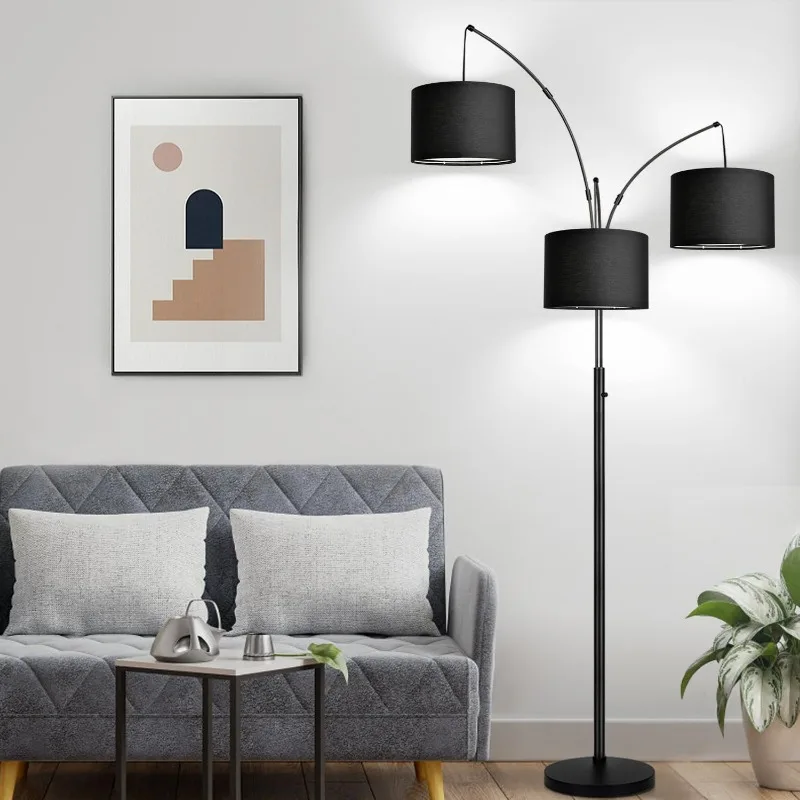
Material Considerations
- Avoid toxic materials in open stabilizing elements (lead weights, certain adhesives)
- Ensure any DIY materials have smooth edges and finished surfaces
- Choose fire-resistant materials, especially near the light source
- Consider potential allergens in materials like certain woods or adhesives
Black arc floor lamps with their sleek, contemporary designs often have narrower bases and may require particular attention to safety when stabilizing. The contrast between the dark finish and stabilizing elements can also make safety features more visible, so aesthetic integration becomes more important.
Remember that the primary purpose of stabilization is safety—a beautiful lamp that poses a tipping hazard defeats the purpose of your efforts. Always prioritize secure function over perfect aesthetics when making stabilization decisions.
Advanced Troubleshooting for Persistent Stability Issues
Sometimes basic stabilization methods aren’t enough to fully resolve stability issues. Here are solutions for more challenging situations:
Q: My lamp wobbles even after adding substantial weight to the base. What’s wrong?
A: The problem may be structural rather than weight-related. Check for:
– Bent or warped components in the arc or pole
– Uneven contact between base sections
– Hidden damage to internal components
– Design flaws that create inherent instability
Solution: Consider reinforcing the pole with a discreet support rod, or adding a secondary stabilizing leg that extends in the opposite direction of the arc.
Q: The lamp seems stable but gradually tilts over days or weeks. Why?
A: This usually indicates:
– Floor material slowly compressing under the weight
– Connection points gradually loosening from vibration
– Temperature or humidity changes affecting components
– Weighted base contents shifting over time
Solution: Use thread-locking compound on threaded connections and create a more rigid platform under the base that distributes weight more effectively.
Q: My lamp has an unusually small base by design. Can it ever be truly stable?
A: Lamps with particularly small bases relative to their arc length face inherent stability challenges. Consider:
– Creating a custom base that maintains the aesthetic but increases the footprint
– Using a combination of wall anchoring and base weighting
– Repositioning the lamp so the arc extends over furniture rather than open floor space
– Consulting a professional for a custom solution if the lamp has significant value
Understanding arc lamp base types can help you determine whether your lamp’s stability issues are related to its fundamental design or just need proper adjustment.
When standard approaches fail, combining multiple stabilization techniques often succeeds. The key is identifying the specific cause rather than continuing to add weight or other modifications that don’t address the core issue.
Popular Arc Floor Lamp Models and Their Specific Stability Solutions
Different arc lamp designs present unique stability challenges. Here’s guidance for some common styles:
Minimalist Single-Pole Designs
These sleek lamps with narrow profiles often have insufficient base weight:
– Add a custom-cut steel plate under the existing base
– Consider hidden weights that maintain the clean aesthetic
– Position these lamps in corners where walls can provide secondary support
– Use clear mounting solutions that don’t detract from the minimalist design
Classic Marble Base Models
These lamps use heavy marble bases but may still need help:
– Check for felt padding between marble and floor that may compress
– Add non-slip material between the marble base and flooring
– Verify the connection between the marble base and metal pole is secure
– Consider a slightly larger marble platform that maintains the design aesthetic
Adjustable Arc Designs
Lamps with adjustable arcs create shifting balance points:
– Add counterweights that account for the maximum extension position
– Install a secondary support that engages when the arc is fully extended
– Create stability solutions that work in all possible configurations
– Mark “safe” extension limits if certain positions are inherently unstable
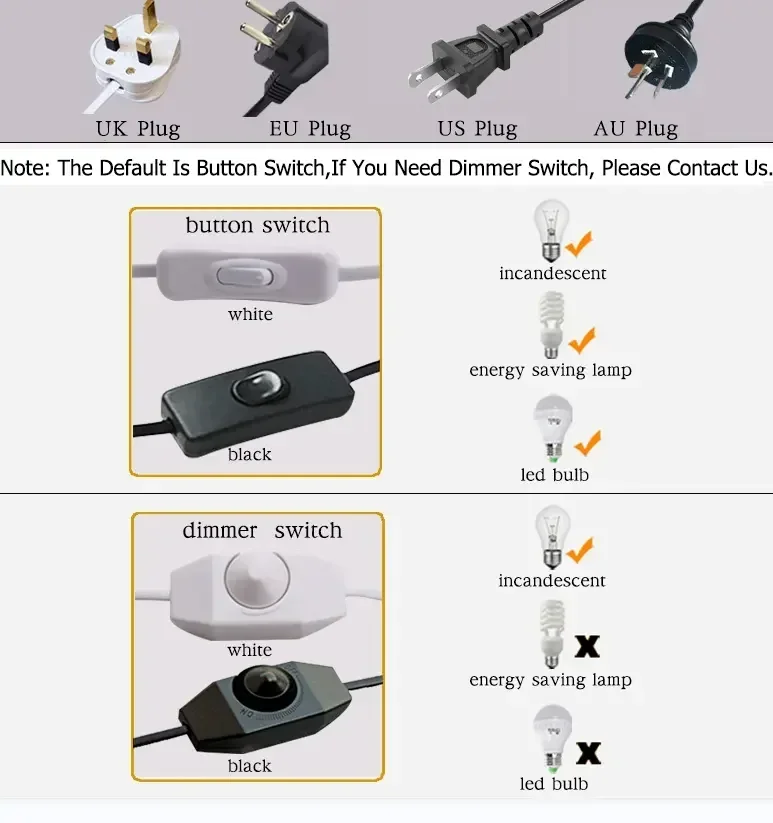
Multiple-Light Arc Lamps
These statement pieces with multiple lights on one arc require special attention:
– Ensure the base weight accounts for uneven light distribution
– Check that all light fixtures are properly secured and balanced
– Consider a broader-than-standard base extension for better support
– Position the lamp so the heaviest cluster of lights is centered over the base when possible
The basic principles of stabilizing floor lamp bases apply to all types, but tailoring your approach to your specific model will yield the best results. Remember that manufacturer designs sometimes prioritize aesthetics over stability, making aftermarket solutions necessary even for high-end lamps.
Contemporary Arc Floor Lamp, Large Arc Floor Lamp, Oversized Arched Floor Lamp
$460.63 Select options This product has multiple variants. The options may be chosen on the product pageContemporary Arc Floor Lamp, Large Arc Floor Lamp, Marble Base Arc Floor Lamp
$224.94 Select options This product has multiple variants. The options may be chosen on the product pageMid-Century Arc Floor Lamp, Wood Arc Floor Lamp
$230.86 Select options This product has multiple variants. The options may be chosen on the product pageVintage Arc Floor Lamp, Wood Arc Floor Lamp
Price range: $603.87 through $1,346.09 Select options This product has multiple variants. The options may be chosen on the product page- $1,003.85 Select options This product has multiple variants. The options may be chosen on the product page
Black Arc Floor Lamp, Contemporary Arc Floor Lamp
Price range: $277.34 through $458.46 Select options This product has multiple variants. The options may be chosen on the product page
When to Invest in a More Stable Arc Lamp Design
Sometimes, despite your best efforts, an arc floor lamp may have fundamental design flaws that make long-term stability difficult to achieve. Recognizing when to upgrade rather than continue modifying can save you time, money, and frustration.
Signs Your Current Lamp May Need Replacement
- You’ve tried multiple stabilization techniques without lasting success
- The lamp requires constant readjustment to remain stable
- The base material is too light relative to the arc length
- Structural components show signs of stress or bending
- Connections continue to loosen despite proper tightening
Key Stability Features to Look for in New Lamps
- Weighted base proportional to arc length and height
- Wide, low-profile base design that provides a stable footprint
- Quality materials that won’t warp or bend over time
- Solid connections between components
- Thoughtful cable management that prevents cord-related tipping
Cost-Benefit Considerations
- Compare the cost of extensive modifications to the price of a new, inherently stable lamp
- Consider the time investment required for ongoing maintenance of a problematic lamp
- Factor in the value of peace of mind, especially in households with children or pets
- Weigh aesthetic preferences against practical stability needs
At Interior Ivy, we understand the importance of both beauty and function in lighting design. Stable base designs for arc floor lamps combine artistic vision with practical engineering to create lamps that remain secure without sacrificing style.
Remember that even the most beautiful lamp loses its appeal if it requires constant adjustment or causes worry about tipping. Sometimes investing in quality design upfront saves both money and frustration in the long run.
Final Tips for Perfectly Balanced Arc Floor Lamps
As we wrap up this guide, here are the key takeaways to help you maintain perfectly balanced arc floor lamps:
Diagnose Before Acting: Identify the specific cause of instability before implementing solutions.
Combine Methods: The most effective approach often involves multiple stabilization techniques working together.
Maintain Aesthetics: Choose stabilization methods that complement your lamp’s design rather than detract from it.
Consider Placement: Position your lamp with stability in mind—away from high-traffic areas and with the arc over furniture when possible.
Start Early: Address stability issues during initial assembly rather than waiting for problems to develop.
Regular Maintenance: Make connection checks and stability assessments part of your routine home maintenance.
Safety First: Always prioritize secure function over perfect aesthetics when making stabilization decisions.
Know When to Upgrade: Recognize when a lamp’s design makes long-term stability unlikely and consider more inherently stable options.
By applying these principles, you can enjoy the dramatic lighting and artistic design of arc floor lamps without the frustration of constant wobbling or safety concerns. With proper stabilization, your arc lamp will become a reliable fixture that enhances your space for years to come.

